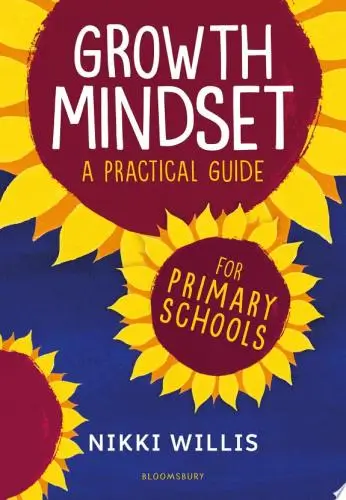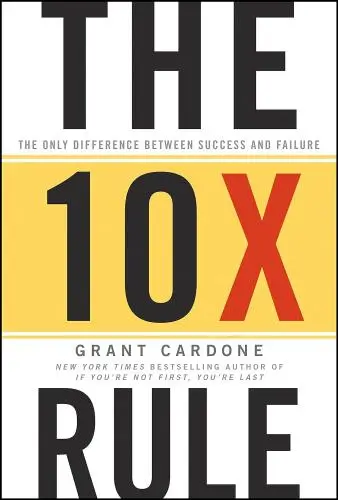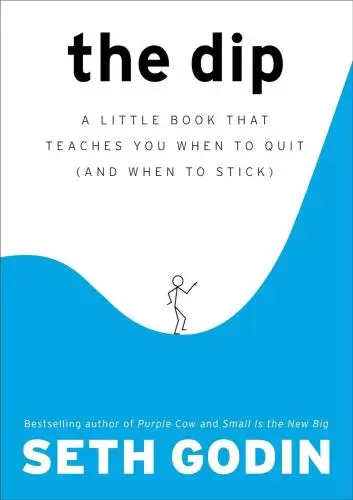
The War of Art
Break Through the Blocks and Win Your Inner Creative Battles
What's it about?
The War of Art is a motivational guide for overcoming creative blocks and self-doubt. Steven Pressfield delves into the concept of Resistance, the force that prevents artists from fulfilling their potential. With practical advice and insightful anecdotes, this book empowers readers to conquer their inner demons and unleash their creative genius. Pressfield's no-nonsense approach and powerful message make this a must-read for anyone striving to pursue their passions.
About the Author
Steven Pressfield is a prolific author known for his historical fiction novels, including "Gates of Fire" and "The Afghan Campaign." His writing style is characterized by vivid storytelling, immersive settings, and deep exploration of themes like courage, honor, and sacrifice. Pressfield often offers unique perspectives on historical events and figures, bringing them to life with his powerful prose. His work is a must-read for fans of military fiction and historical drama.
10 Key Ideas of The War of Art
Recognize Resistance
Understanding that resistance is the primary obstacle to creativity and productivity is crucial.
Resistance manifests as fear, procrastination, distractions, and any form of self-sabotage that prevents you from doing your work.
Recognizing it allows you to confront and overcome these barriers, rather than being controlled by them.
Learn DeeperIdentify Your Resistance: Start by keeping a journal of your daily activities. Note the times when you feel most reluctant to work on your projects. Is it when you first sit down to work, or when you approach a particularly challenging part of your project? Recognizing these patterns is the first step to overcoming them.
Set Small, Achievable Goals: Break your work into smaller, more manageable tasks. If you're writing a book, focus on writing a page a day rather than the entire chapter. Celebrating small victories can help build momentum and reduce the feeling of being overwhelmed, which often feeds resistance.
Create a Routine: Establish a regular schedule for your creative work. Whether it's first thing in the morning or right after dinner, find a time that works for you and stick to it. The consistency will help minimize resistance over time, as your mind begins to associate this time with productivity.
Limit Distractions: Identify what commonly distracts you from your work—social media, emails, household chores—and take steps to minimize these distractions during your dedicated work time. This might mean turning off your phone, using website blockers, or setting specific times for checking emails.
Seek Accountability: Share your goals with a friend, family member, or online community. Knowing that someone else is aware of your goals and will check in on your progress can provide an extra layer of motivation to push through resistance.
- Example
If you're a writer struggling with procrastination, you might start by writing for just 20 minutes every morning. Over time, as this becomes a habit, you can gradually increase the duration or complexity of your writing sessions.
- Example
For an artist facing fear of starting a new piece, they could set a goal to sketch for 10 minutes a day. This low-pressure commitment makes it easier to begin, and these daily sketches can serve as a warm-up that leads into more significant work.
Become a Professional
Transitioning from an amateur to a professional mindset is key.
Professionals show up every day, work no matter what, commit over the long haul, act in the face of fear, and do not take failure or success personally.
This shift in perspective ensures dedication and resilience in pursuing your goals.
Learn DeeperSet a Daily Routine: Establish a consistent daily schedule dedicated to your craft or goal. Whether it's writing, painting, coding, or any other pursuit, allocate specific hours each day for focused work.
Create a Dedicated Workspace: Having a physical space where you only focus on your work can significantly enhance your professional mindset. This could be a home office, a desk in the corner of your room, or even a specific table at a local library or café.
Define Your Goals and Deadlines: Professionals work with clear objectives and timelines. Set specific, measurable, achievable, relevant, and time-bound (SMART) goals for your projects and break them down into actionable steps.
Embrace Feedback and Continuous Learning: Seek out constructive criticism from peers, mentors, or through self-assessment. Use this feedback to improve your skills and work. Additionally, dedicate time to learning new techniques or information related to your field.
Practice Resilience: Understand that rejection and failure are part of the process. Instead of taking them personally, view them as opportunities to learn and grow. Remember, persistence is key.
- Example
A writer aiming to transition from an amateur to a professional might start by setting a goal to write 500 words every morning before work, creating a quiet writing nook at home, and joining a writer’s group for feedback and accountability.
- Example
An aspiring professional artist could designate every evening from 7 PM to 9 PM for painting, convert a spare room into a studio, set a goal to complete one painting every two weeks, attend workshops to learn new techniques, and submit works to galleries, using rejections as motivation to improve.
Embrace a Routine
Establishing a consistent routine is essential for productivity.
A set schedule not only combats resistance by removing the need to decide when to work but also helps to cultivate discipline and focus.
Consistency in your work habits builds momentum and makes the process of creating a part of your daily life.
Learn DeeperIdentify Your Peak Creative Times: Everyone has times of the day when they feel most creative and productive. Identify yours and schedule your most important work during these hours.
Set a Daily Minimum Goal: Whether it's a word count for writers, a time allotment for artists, or a specific task for other projects, establish a small, achievable daily goal to maintain momentum.
Create a Dedicated Workspace: Having a specific place where you only work can help signal to your brain that it's time to focus. This doesn't have to be an office; a corner of a room or a specific table can work just as well.
Limit Distractions: Turn off notifications, use apps that block distracting websites, and inform others of your work hours to minimize interruptions.
Review and Adjust Regularly: At the end of each week, review what you've accomplished and adjust your goals and routine as necessary. Flexibility is key to finding what works best for you.
- Example
A writer decides their peak creative time is in the morning. They commit to writing 500 words every day from 7 AM to 9 AM, using a timer to keep track. They work in a quiet corner of their living room, which is designated as their 'writing spot.'
- Example
An artist finds they're most productive in the late afternoon. They set a goal to sketch for at least 30 minutes daily from 4 PM to 4:30 PM. They use a specific desk for their art, ensuring all materials are ready before they start, and use a site blocker to prevent social media browsing during this time.
Work Territorially, Not Hierarchically
Focusing on the intrinsic rewards of your work, rather than external validation (money, fame, praise), fosters a stronger commitment to your craft.
When you work territorially, you derive satisfaction from the act of creation itself, which is more sustainable and fulfilling than seeking approval from others.
Learn DeeperIdentify Your Territory: Start by understanding what your 'territory' is. This could be writing, painting, coding, or any other creative endeavor. Ask yourself what activity you find deeply satisfying to do, regardless of the external rewards.
Set Intrinsic Goals: Instead of setting goals based on external validation like earning a certain amount of money or gaining followers, set goals related to the improvement and enjoyment of your craft. For example, aim to write 500 words daily or to learn a new painting technique.
Create a Ritual: Establish a daily ritual that helps you enter your creative territory. This could be as simple as organizing your workspace, playing specific music, or a short meditation before you start. The key is consistency and making the transition into your creative work.
Track Your Progress: Keep a journal or log of your activities within your territory. Note not just what you did, but how you felt about it. Over time, this will help reinforce the intrinsic rewards of your work.
Share Selectively: While working territorially means focusing on internal satisfaction, sharing your work can still be valuable. Choose to share in environments that respect and understand the value of the work itself, rather than just the outcomes.
- Example
A writer who decides to write every morning for an hour, focusing on the joy of storytelling rather than the potential for publication. They keep a journal where they reflect on the writing process and the satisfaction it brings, regardless of whether the work gets published.
- Example
An artist who sets a goal to experiment with a new medium every month, finding joy in the learning process itself. They organize weekly sessions where they explore these new mediums, documenting their feelings and thoughts about each session in a sketchbook.
Seek Failure
Viewing failure as a necessary step towards success is vital.
Failure is an indication that you are pushing your limits and venturing into new territories.
It provides valuable lessons and feedback, allowing you to refine your approach and become more resilient in the face of challenges.
Learn DeeperEmbrace Challenges: Actively seek out tasks and projects that push you out of your comfort zone. This could mean taking on a project at work that requires skills you're not yet confident in, or starting a side project that interests you but seems daunting.
Reflect on Failures: Instead of brushing off failures, take time to reflect on them. Ask yourself what went wrong, what you learned, and how you can improve next time. Keeping a journal for these reflections can be particularly helpful.
Set Failure Milestones: Instead of just setting success milestones, set failure milestones as well. This means setting goals for the number of rejections you want to receive or the number of times you want to fail at something. It shifts your mindset to see failure as progress.
Seek Feedback: After a failure, seek feedback from mentors, peers, or anyone relevant to the situation. Understanding an external perspective can provide insights you might have missed and help you grow.
Celebrate Small Wins: Recognize and celebrate the small victories along the way. This helps build resilience by reminding you that progress is being made, even if it's not always in the form of a big win.
- Example
A writer submitting their novel to publishers, aiming for a certain number of rejection letters. Each rejection is a step closer to acceptance, offering valuable feedback and opportunities to refine their work.
- Example
A budding entrepreneur pitching their startup idea to investors, knowing that each 'no' brings them closer to a 'yes.' They use the feedback from these pitches to refine their business model and pitch presentation.
Deeper knowledge. Personal growth. Unlocked.
Unlock this book's key ideas and 15M+ more. Learn with quick, impactful summaries.
Read Full SummarySign up and read for free!
The War of Art Summary: Common Questions
Experience Personalized Book Summaries, Today!
Discover a new way to gain knowledge, and save time.
Sign up for our 7-day trial now.
No Credit Card Needed

Similar Books
Trending Summaries

Peak
Anders Ericsson
Never Split the Difference
Chris Voss
Smart Brevity
Jim VandeHei
The Psychology of Money
Morgan Housel
The First 90 Days
Michael D. Watkins
Atomic Habits
James Clear
Thinking, Fast and Slow
Daniel Kahneman
The Body Keeps the Score
Bessel van der Kolk M.D.
The Power of Regret
Daniel H. Pink
The Compound Effect
Darren HardyNew Books

The ^AOxford Handbook of Job Loss and Job Search
Ute-Christine Klehe PhD
Job Interviews For Dummies®
Joyce Lain Kennedy
Job Interviews In A Week
Alison Straw
Handbook of Career Development
Gideon Arulmani
The Art of Spending Money
Morgan Housel
$100M Offers
Alex Hormozi
A Candle for Kiri
Edna Mae Holm
Principles of Marketing, Global Edition
Gary Armstrong
Serpent Rising: The Kundalini Compendium
Neven Paar










